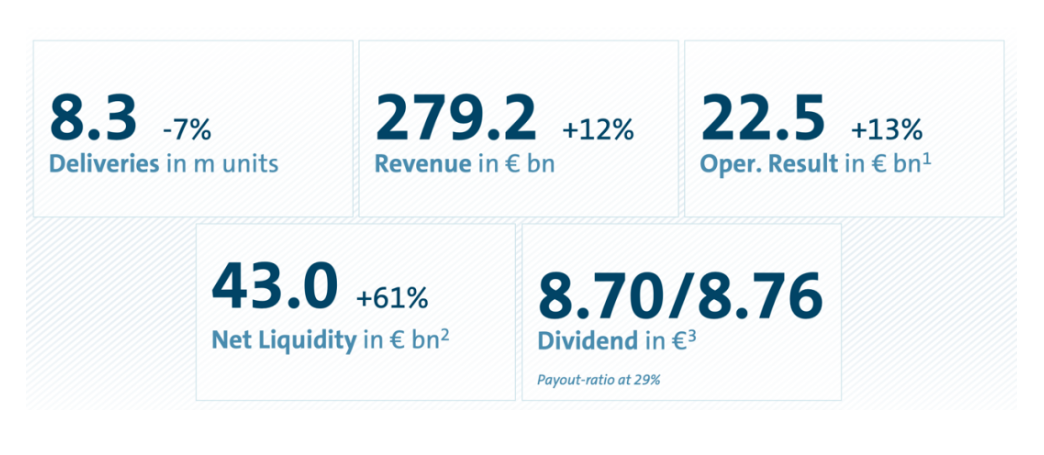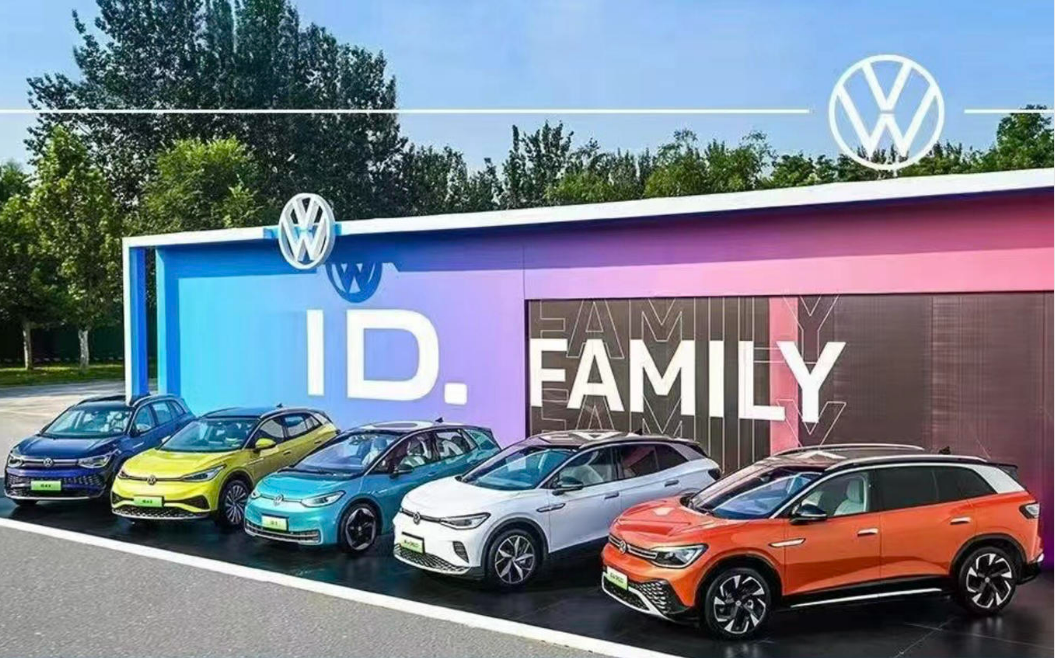Author: Dayan
On March 14th, Volkswagen held its annual media communication conference. The most impressive thing was Volkswagen’s investment of €180 billion in the next five years to transform the entire group into intelligent electric vehicles, with a continued focus on China and North America.
This is the first time that Herbert Diess, the new head of Volkswagen, has appeared. To dispel concerns from all sides, and to maintain confidence from investors and users, Diess has increased the proportion of funds allocated to electrification and digital software from 56% to nearly 70% of the five-year budget.
As we all know, Volkswagen under the Diess era was very aggressive in the field of intelligent electric vehicles. At that time, Volkswagen, with Tesla as its benchmark, had a difficult time on its own. Due to the lack of self-developed key core technology, multiple projects suffered significant delays, which prompted Diess to leave. As Diess’s successor, Oliver Blume, the former CEO of Porsche, was initially regarded by the outside world as a role to coordinate the relationship between Porsche and Volkswagen Group, and to promote Porsche’s successful IPO. However, from the current perspective, Blume is not a transitional figure.
Impressive financial report supports electrification transformation
In 2022, like other car companies, Volkswagen faced significant challenges in the supply chain, especially in the Chinese market, which is regarded as the pillar, which has been hit by the pandemic and the supply chain. Therefore, Volkswagen’s global sales fell by 7%.
However, by tilting more resources towards high-end models and high-end brands, as well as the growth in sales of more expensive trucks and electric vehicles, the Volkswagen Group’s full-year sales revenue increased against the trend by 11.6% to reach €279.2 billion. The company’s operating profit reached €22.5 billion, an increase of €2.5 billion compared to 2021. The operating sales return rate increased from 8.0% to 8.1%, and the pre-tax profit was €22 billion, a year-on-year increase of 9.5%.

This series of impressive data laid a solid foundation for Volkswagen’s planned investment of up to €180 billion in the future.
On the other hand, Porsche, a brand under Volkswagen, completed its IPO in 2022, which brought considerable benefits to Volkswagen Group as a major shareholder.As a traditional car company, both the electrification transition of the powertrain and the development of intelligent networked technology require a significant amount of investment for Volkswagen. For a large multinational auto group like Volkswagen, maintaining a steady stream of profits from fuel vehicle business is essential to ensure that the company has sufficient resources to balance the needs of all parties, and ultimately achieve the transformation of the group.
In 2023, the supply chain bottleneck of car companies will gradually improve, and Volkswagen Group expects its delivery volume to increase by 14.97% to 9.5 million vehicles. At the same time, group sales revenue will increase by 10% to 15% year-on-year, and the operating sales return on investment is expected to reach between 7.5% and 8.5%.
The focus for the next five years: battery and software
At the beginning of his tenure last year, Ralf Brandstätter proposed the “Ten-point Plan”, which mainly includes planning cycle, product, Chinese market, North American business, CARIAD, new scalable system platform (SSP), battery and charging, mobility services, sustainability, and capital market. Among them, battery and software are two important focuses.
In the field of batteries, Volkswagen will invest 15 billion euros in battery factories and battery raw materials in the next five years. Last year, Volkswagen announced that it will build six PowerCo battery factories in Europe, with the first two located in Salzgitter, Germany and Valencia, Spain, already under construction. Recently, Volkswagen also announced that it will build the first North American battery super factory in Canada. In Volkswagen’s view, Canada is an ideal location for battery raw materials and clean power supply.
By 2029, with the continued deepening of Volkswagen’s electrification transformation, PowerCo’s battery business is expected to generate sales of over 20 billion euros. This also means that PowerCo will have the capital and conditions that allow it to be listed separately by that time.Apart from its battery business, it’s worth mentioning that Volkswagen will continue to invest in the field of internal combustion engines. Looking globally, internal combustion engine businesses or hybrid technologies based on them still have a place in many markets where charging infrastructure is not convenient. According to Volkswagen’s plans, it will launch the next-generation engines that meet the more stringent Euro 7 emissions regulations.
For most traditional car companies, gasoline businesses can still provide the most stable financial support for their electrification transformation. And from a broader perspective, even though the European market will fully ban the use of gasoline in 2035, the EU still left a backdoor open for engine technologies based on renewable fuels to gain Germany’s approval. At Volkswagen, the possibilities of relevant technical routes have already been verified through the renovation of existing internal combustion engines.
As one of Diess’s iconic achievements during his tenure, CARIAD is undergoing a comprehensive adjustment. Under the influence of Tesla, Diess has always emphasized the importance of self-research. However, both the delayed delivery of the ID.3 and the postponement of the E3 architecture 2.0 have made Volkswagen realize that independent development of vehicle electrical architecture will face considerable challenges. Due to the inefficiency of the CARIAD self-developed system, the rumors of a Porsche Macan EV, an Audi Q6 e-tron, and the Artemis technical platform have all suffered delays. Bentley’s goal of electrification by 2030 has been threatened, which has become the final straw that led to Diess’s downfall. Therefore, before and after Arbo Mü comes to power, CARIAD has already shifted from fully self-reliance to collaborating with outsourcing and even direct acquisitions from other companies to quickly fill in the missing capabilities of Volkswagen.
The importance of the Chinese market to Volkswagen Group is self-evident. However, despite being regarded as a “god car” by the Chinese people, Volkswagen has also begun to face increasingly significant challenges in the domestic market.# 2022, Volkswagen delivered 3.18 million vehicles in China, a 4% YoY decline. According to the sales ranking released by China Passenger Car Association, BYD surpassed FAW-Volkswagen, and SAIC-Volkswagen was also surpassed by Changan Automotive, exhibiting the comprehensive improvement of domestic self-owned brands. In 2022, the ID. electric vehicle family delivered 143,100 vehicles in China throughout the year, with a YoY growth of a staggering 102.9%. However, considering that BYD sold over 200,000 vehicles for multiple months, as well as the strong performance of the new energy vehicle sector in China, Volkswagen currently finds it challenging to replicate its glory in the era of combustion-engine cars

From an investment perspective, Volkswagen’s market layout in China is relatively comprehensive. Leaving aside the two joint venture automakers, South and North Volkswagen, Volkswagen has already acquired 75% of JAC Volkswagen’s equity and has become the major shareholder of battery company Guoxuan High-tech. In the field of intelligence, Volkswagen established CARIAD China software company in China and invested 2.4 billion euros in Horizon Robotics through CARIAD and established a joint venture, thereby entering the chip design field. According to Arno Antlitz, the CEO of Volkswagen Group China Finance, the importance of the Chinese market to Volkswagen will continue to increase. Volkswagen will continue to enhance its competitiveness in the field of electric vehicles to expand its market share in China. For Volkswagen, accelerating its progress in both the European and Chinese markets are necessary to achieve better performance.
As the successor of Diess, Osterloh suspended several projects that were introduced during Diess’s tenure, such as the Trinity electric vehicle project based on the SSP platform, the Trinity-exclusive factory for producing Trinity, and the autonomous driving technology company ARGO AI that was jointly established with Ford.
Originally, there were doubts towards Volkswagen’s transition to intelligent and electric vehicles. However, through this media communication event, Volkswagen basically dispelled doubts from all parties.
Compared with Diess, Osterloh wants to be more radical. After all, the transformation to electrification has become a common consensus in the global automobile market. Of course, he also hopes to be more pragmatic. It is difficult for a traditional automaker like Volkswagen to possess powerful software development capabilities overnight. To avoid stepping into pitfalls that his predecessor had encountered, Osterloh is seeking to replicate the success of Porsche in Volkswagen Group, which is a much larger platform. The burden on Osterloh is not light.# Markdown 中文文本
以下是一份 Markdown 格式的中文示例文本。
基本语法
标题
支持六级标题。
# 一级标题
## 二级标题
### 三级标题
#### 四级标题
##### 五级标题
###### 六级标题
列表
无序列表
支持使用星号、加号或减号作为列表标记。
- 无序列表项 1
* 无序列表项 2
+ 无序列表项 3
有序列表
使用数字后跟上句号作为标记。
1. 有序列表项 1
2. 有序列表项 2
3. 有序列表项 3
引用
使用大于号表示引用。
> 这是一段引用文字。
粗体和斜体
使用单个或双个星号可以使文字变得粗体或斜体。
**粗体文字**
*斜体文字*
代码
使用 ` 包围的内容会以等宽字体显示。
`print("Hello World!")`
扩展语法
链接
行内式
这是一个链接:[百度一下,你就知道](https://www.baidu.com/)
参考式
这是一个链接:[百度一下,你就知道][1]
[1]:https://www.baidu.com/
图片
行内式
这是一个图片:
参考式
这是一个图片:![Markdown Logo][2]
[2]: https://markdown-zh.xyz/favicon.png
表格
支持使用 | 和 - 组成的表格。
| 姓名 | 年龄 | 性别 |
|:----:|:----:|:----:|
| 张三 | 18 | 男 |
| 李四 | 20 | 女 |
HTML
Markdown 支持使用 HTML 标签。
This article is a translation by ChatGPT of a Chinese report from 42HOW. If you have any questions about it, please email bd@42how.com.
